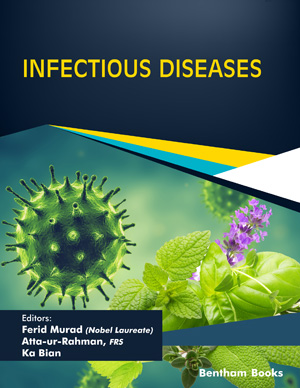Abstract
Background: Follistatin-like proteins (FSTLs) are adipomyokines secreted by adipocytes and myocytes. Previous studies have reported an increase in circulating FSTL1 levels in response to cardiovascular injuries. In this study, we conducted a systematic review and metaanalysis to assess the association between circulating FSTLs and Cardiovascular Diseases (CVDs).
Methods: We performed a comprehensive literature search using PubMed, Web of Science, Scopus, and Embase databases. After screening the articles, we selected eligible studies, extracted relevant data, and calculated the pooled Standardized Mean Difference (SMD). We also conducted a sensitivity analysis to identify sources of heterogeneity and assessed publication bias.
Results: Among the 577 articles initially retrieved, we included 5 studies comprising a total of 941 cases with CVDs and 446 controls. All included studies measured FSTL1 levels. The pooled SMD analysis revealed a significant difference in circulating FSTL1 levels between subjects with CVDs and control groups (SMD = 0.853, 95% CI = 0.158-1.548, P = 0.016). Heterogeneity was primarily attributed to a single study that measured FSTL1 levels in heart failure patients with preserved ejection fraction. No publication bias was observed.
Conclusion: Our findings demonstrate significantly higher levels of FSTL1 in patients with CVD compared to control subjects. This suggests that FSTL1 may have potential as a diagnostic and prognostic biomarker in CVDs. However, further well-designed studies are needed to validate its clinical utility.
[http://dx.doi.org/10.1016/j.medntd.2019.100025]
[http://dx.doi.org/10.1161/CIRCULATIONAHA.119.044795] [PMID: 32468833]
[http://dx.doi.org/10.1161/CIR.0000000000000395] [PMID: 27162236]
[http://dx.doi.org/10.2174/0929867325666171205144627] [PMID: 29210643]
[http://dx.doi.org/10.1253/circj.CJ-08-0961] [PMID: 19043226]
[http://dx.doi.org/10.1016/j.ijcard.2018.09.089] [PMID: 30297191]
[http://dx.doi.org/10.1016/bs.pmbts.2015.07.002] [PMID: 26477920]
[http://dx.doi.org/10.1210/clinem/dgaa629] [PMID: 32894773]
[http://dx.doi.org/10.1002/bdrc.21030] [PMID: 23723173]
[http://dx.doi.org/10.1007/s10735-016-9706-z] [PMID: 27913976]
[http://dx.doi.org/10.1186/ar3241] [PMID: 21303509]
[http://dx.doi.org/10.4048/jbc.2018.21.e43] [PMID: 30275855]
[http://dx.doi.org/10.1038/nature15372] [PMID: 26375005]
[http://dx.doi.org/10.2174/1389557519666190312161551] [PMID: 30864520]
[PMID: 37624693]
[http://dx.doi.org/10.1536/ihj.21-203] [PMID: 34853217]
[http://dx.doi.org/10.1161/CIRCULATIONAHA.108.767673] [PMID: 18519848]
[http://dx.doi.org/10.1007/s10654-010-9491-z] [PMID: 20652370]
[http://dx.doi.org/10.1186/1471-2288-14-135] [PMID: 25524443]
[http://dx.doi.org/10.1016/j.cardfail.2020.05.015] [PMID: 32470377]
[http://dx.doi.org/10.1016/j.hlc.2016.06.260]
[http://dx.doi.org/10.1016/j.jacbts.2016.04.002] [PMID: 27430031]
[http://dx.doi.org/10.1161/CIRCHEARTFAILURE.110.960625] [PMID: 21622850]
[http://dx.doi.org/10.1373/clinchem.2009.129411] [PMID: 19574466]
[http://dx.doi.org/10.1155/2021/9713582] [PMID: 34868459]
[http://dx.doi.org/10.1016/j.tem.2005.01.003] [PMID: 15734148]
[http://dx.doi.org/10.1210/en.2008-0151] [PMID: 18617621]
[http://dx.doi.org/10.1002/jcp.29588] [PMID: 32017077]
[http://dx.doi.org/10.1007/s00018-018-2805-0] [PMID: 29594389]

















